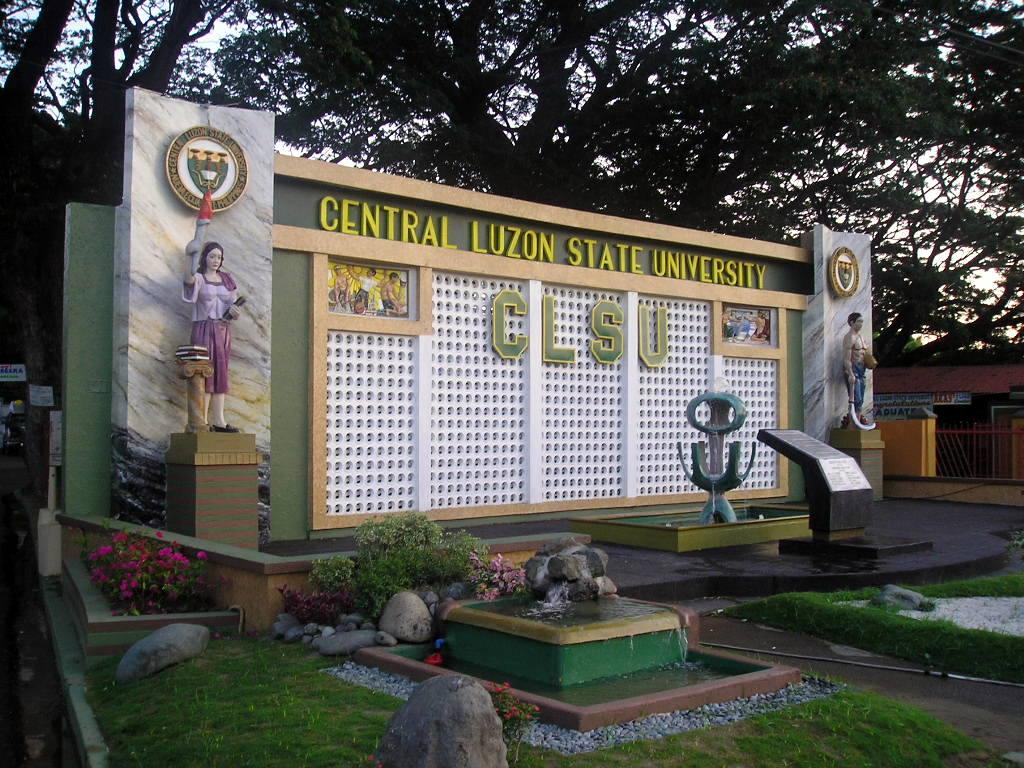
Central Luzon State University, or CLSU, is a state university located in a 658-hectare campus in Science City of Muñoz, Nueva Ecija, Philippines. The University is the lead agency of the Muñoz Science Community and the seat of the Regional Research and Development Center in Central Luzon. To date, CLSU is one of the premiere institutions for agriculture in the Philippines and in Southeast Asia, known for its researches in aquaculture, ruminants, crops, orchard, and water management researches.
The Central Luzon State University located at Science City of Muñoz, Nueva Ecija Philippines. It was started as a farm school. It was established in 1907 as the Central Luzon Agricultural School (CLAS) with the noble of promoting agriculture and mechanics arts. Later the promotion home making arts became another burning commitment.
In 1954, the CLAS was converted into a college known as Central Luzon Agricultural College (CLAC). With mission of promoting agricultural Education. In 1965, it was elevated into university, the Central Luzon State University, to provide professional and technical training in agriculture and mechanics arts, provide advance instruction, and promote research, literature, philosophy, the science, technology and arts. Over the years, CLSU has been known as an agricultural-oriented institution. Today, it was transformed into a comprehensive university offering various undergraduate and graduate courses. It has been designed as Zonal University in Luzon as one of the more known institution of higher learning in the Philippines. CLSU is located on a 658-hectare sprawling main campus in Science City of Muñoz, Nueva Ecija, Philippines. It is located 150km north of Manila. It has more than 1000-hectare site for ranch type buffalo production and forestry development up the hills of Carranglan in the north of Nueva Ecija; it has 40km away from the main campus. The University is the lead agency of the Muñoz Science Community and the seat of the Regional Research and Development Center in the Central Luzon. To date, CLSU is one of the Premier intuitions of agriculture in Southeast Asia known for its breakthrough researches in aquatic culture (pioneer in Sex Reversal of Tilapia), ruminant, crops, orchard, and water management researches.
Brief History
The Central Luzon State University (CLSU) is one of the renowned and prestigious institutions of higher learning in the country. It has persistently produced well-trained people and provided services with marked excellence. In April 2007, CLSU celebrated its centenary.
It started as a farm school, the Central Luzon Agricultural School (CLAS), through Executive Order No. 10 issued by then governor of Nueva Ecija, James F. Smith[citation needed], on April 12, 1907. Its initial emphasis was on the development of skilled and technician-type graduates to meet the human resource requirements in the opening and cultivation of rich farmlands.
As a school, CLAS then stamped a class of its own. With its unique curriculum, it promoted agriculture and mechanic arts which combined practicum and academic work. In time, CLAS became known as the “mother of vocational agriculture schools” in the country.
The school was converted into Central Luzon Agricultural College (CLAC) on December 31, 1950 by virtue of Executive Order No. 393 issued by then President Elpidio Quirino to promote agricultural education. As a higher learning institution, CLAC distinguished itself as the first state college established by the Philippine government to promote agricultural education, agricultural engineering and home economics, among others.
On June 18, 1964, CLAC was elevated into Central Luzon State University (CLSU) by virtue of Republic Act No. 4067 “to give professional and technical training in agriculture and mechanic arts; provide advanced instruction; promote research, literature, philosophy, the sciences, technology and arts.”
From its basically agricultural orientation, CLSU turned into a comprehensive higher education institution offering various undergraduate and graduate courses.
The CLSU campus is a sprawling 658-hectare area in the Science City of Muñoz, 150 km north of Manila. On October 19, 2001, CLSU was launched as the Model Agri-Tourism Site for Luzon under the Philippine Agri-Tourism Program, a joint project of the Department of Agriculture and Department of Tourism.
Ranking
The University was ranked by the Commission on Higher Education as one of the top higher learning institutions in the Philippines. The 2010 study ranked the Central Luzon State University as sixth (6th) of the nine (9) Top Universities for the following: Center of Excellence (COE) in Agriculture, Agricultural Engineering, Fisheries, Veterinary Medicine, Teacher Education. And in Centers of Development (COD) in Biology and Chemistry.










